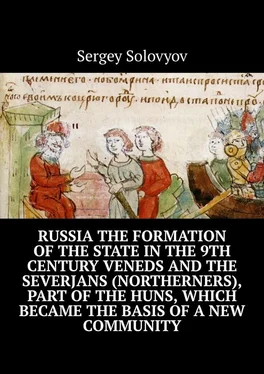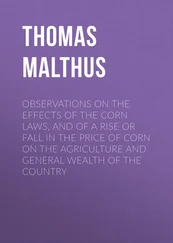Black-faced men and women, old and young, gathered, consulted and decided to meet the intruders with dignity – to fight, while alive. And they began to build fortifications on the side from which the white-skinned heroes are coming.
The next morning the sleds set off as usual and were very happy when they saw the black faces at noon. But soon the Narts noticed that the black people were going to meet them with spears and arrows. Then the cards, who did not like bloodshed, selected several of their warriors and sent them without weapons, so that those blacks would make sure that not enemies were coming to them, but friends. But the black-faced shot arrows at them, wounded two sledges, and the soldiers had to return. The Narts conferred and again sent their unarmed envoys. But the same thing happened as at first. Then all a hundred sledges mounted their fire-like araschi horses and rushed at the black-faced ones, like angry bison, destroyed the walls of the fortification, trampled many of them with the hooves of their horses, knocked desperate brave men down with a whip, and while the sledges did not use the checkers. The black-faced people understood who they were dealing with and that the sledges did not harm the innocent, asked for peace and made peace. The black-faced men made a great feast. The sledges spent exactly one month with the black-faced. And when they returned back to their homeland, the black-faced gave them a lot of cattle, and one hundred of the best black-faced horsemen went with them to see how the famous sledges live and stay with them. A hundred brothers of the Narts returned to Apsny (Abkhazia), with them a hundred black-faced from a distant land. I liked the black-faced Apsny very much, and when the time for parting came a month later, half of the guests returned to their homeland, and the other half of the guests remained forever in the local area. “Here the history of the Abkhazians who went on a campaign to Egypt is indicated, and as evidence, the undoubted existence of the dark-skinned Ethiopians of the Kolkhs, mentioned by Herodotus.
The beginning of the emergence of Indo-European culture is precisely the Yamnaya culture, which, as is generally accepted in modern science, and international science considers it proved that Indo-Europeans came to Europe from the Ciscaucasia and specifically the Volga and Don regions, and even in the passports of Anglo-Saxon states, white Europeans are called “Caucasians”, that is, people from the Caucasus, or rather, the Ciscaucasia. The pits were already familiar with the wheel and made blackened ceramics. The Yamnaya culture is replaced by the catacomb culture, and in the era of this culture, temporal lobed rings, blackened polished ceramics with an extruded pattern and spiral ornaments appear, and it is named according to the custom of burying the dead in catacombs, consisting of a dromos (corridor) and a burial chamber built under a burial chamber. … It was the people of the catacomb culture who began widespread settlement in European regions, and Minyan (blackened) ceramics are found from Turkestan to Hellas, where they began to make ceramic products with an extruded, rather than painted, spiral ornament. Further, this culture is replaced by the Srubnaya culture, adjacent to the Abashev and Andronov cultures, among the monuments of which there are already such religious symbols as the swastika and the meander. Blackened ceramics, lobed rings and boat-shaped goblets made of wood are also among the artifacts of these cultures, and burials with the disposal of the dead are also numerous. Implying belief in the possibility of the existence of “malicious (revived” dead”, inspiring fear to the living. Andronovtsy lived in the territories from the Urals to China, being present in the present-day Gansu province of China. And here for the first time you can see the toponymy and the name of tribes with the name Hun-gantgan. In Troy, monuments similar to the monuments of the Seima-Turbino culture were found (jade axes, four in number, as in the Borodino hoard), and among the monuments of that era there are also silver spears, which are obviously of a magical character, as a weapon against the “living dead.” At a later time, such units were among the Persian kings of the Achaemenid times, according to Quintus Curtius Rufus, and the famous argyraspid unit (silver copies) of the Macedonian tsars, and even much later, among the Russian tsars the bells were armed with silver hatchets, that is, in this era the belief in the magic of silver existed. In a series of Trojan myths, the Trojan prince Gannimed is already found, whose name translates as “The leader of the Gants”, and Hellas of the time of Homer already remembers the tribes of the Huns, and it speaks of the King Gunia from Thessaly.
But from Kifa Guney with twenty and two ships
Sailed, leading the Aenians and warlike, strong Perrebes, (Homer, Iliad)
All who inhabited Mycenae, a wide street city,
(Homer “Iliad”, II, 569—580)
Mycenae (ancient Greek Μυκῆναι, Greek Μυκήνες) is an ancient city in Argolis, one of the centers of the Cretan-Mycenaean culture, later – the ancient Greek civilization, dates back to the second millennium BC. e. The city is located in the Peloponnese, 90 km in a straight line to the southwest of Athens. It is currently in ruins. According to legend, the city was built by Perseus, although according to archaeological excavations and comparison of myths and archaeological data, it is more likely that the Danaans only captured the city from the Pelasgians, as described in the myth of Danae and Egypt. According to Greek tradition, the descendants of Danaus and those who migrated from Elis ruled in Mycenae. amifaonides, and then pelopids. The most famous king of Mycenae is Agamemnon, glorified in the Iliad.
This is how the traveler of antiquity Pausanias describes Mycenae: “Now from Mycenae only part of the city wall and the gate on which lions stand… Between the Mycenaean ruins flows a source (Perseus); there are underground buildings of Atreus (father of Agamemnon) and his sons; in these There is the grave of Atreus and all those who returned from Troy with Agamemnon and whom Aegisthus killed at the feast… But Clytemnestra and Aegisthus are buried at some distance from the wall: they were deemed unworthy to lie inside, where were buried Agamemnon and his companions.”

Cretan goddess in a Scythian hat
The photo above is the rarest, unfortunately, we could not find the full image. Found only in the album “Aegean Art” 1972. editions. This is about openness in science, and take a look at the stowet’s headdress. Before us is a Scythian hat, no more and no less, another proof of the migration of the Huns-Gans at the beginning of the third millennium to Hellas and Egypt. Then the Hans proceeded to India, and the myth about this remained in the form of the myth of Dionysus’s campaign in India. that is, the identity of the shepherd kings (Hyksos) and the Huns-Hans is obvious.
The name Mycenae comes from one of the names of the bull, this is the ancient Greek word from Homer μυκώμεναι (Hom.) – to roar, moo like a bull. There is also an image of a bull in the famous village of Mycenae No. 1428. The name of Mycenae, and the name of the Macedonians – the name of the city and tribe is derived from the name of a bull or a cow. And the translation of the word -δόνες- giving as a gift, worshipers, therefore, the origin of the word Danaans is likely from δόνες. Two tribes have a stem with the word δόνες, Macedonians (Greek Μακεδόνες), Myrmidonians (Old Greek Μυρμῐδόνες).
And the later Macedonians lived where myths indicate the place of residence of the Myrmidons.. So it is likely that the Macedonians are part of the Danaans. After the destruction of Mycenae and the expulsion of the inhabitants in 468. BC. The Argians took refugees in Macedonia.
Читать дальше













